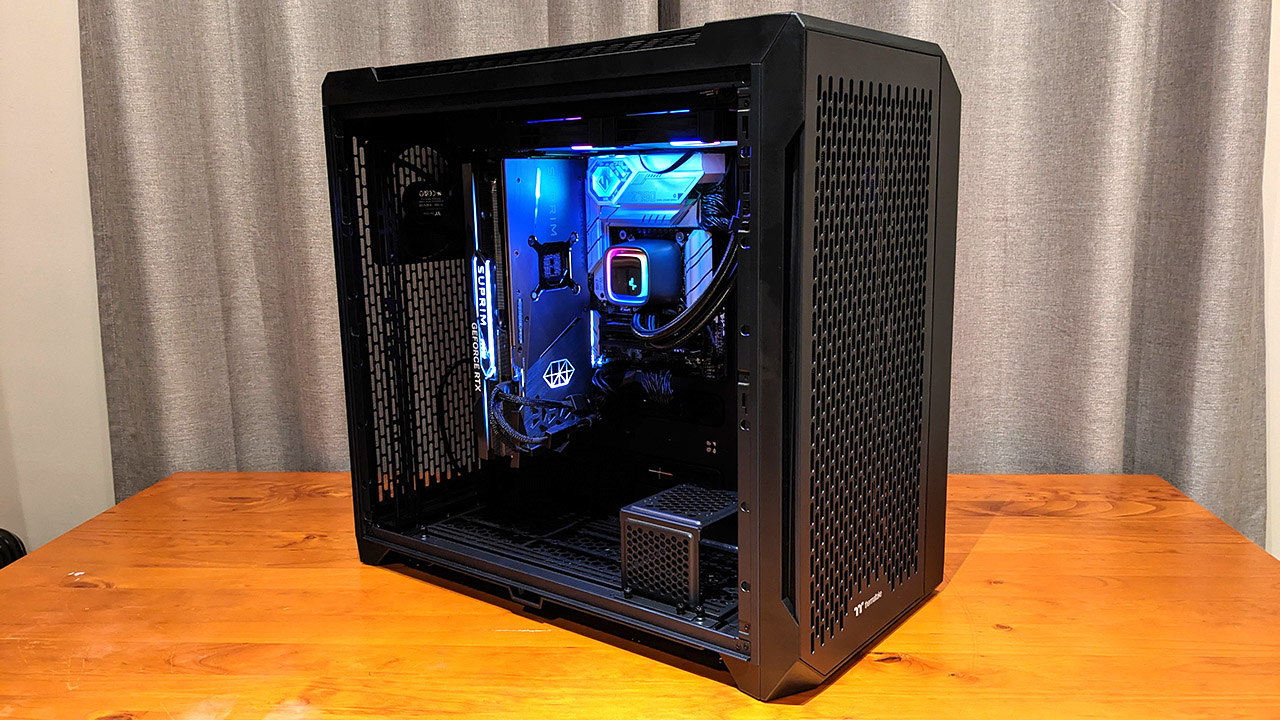Our Verdict
The Thermaltake CTE C750 Air represents a refreshingly different approach to case design. It has some quirks and it's overkill for a worldly build, but if you plan to deck out a powerful system with custom water cooling, it's well worth a look at this price.
For
- Highly flexible
- Loads of space for fans and radiators
- Good price
Against
- Awkward motherboard I/O access
- Internal cables can be difficult to route
- Too big for 'regular' systems
PC Gamer's got your back
PC cases are innumerable. They come in a lot of shapes and sizes, but when it comes to ATX towers, most tend to follow a similar basic layout pattern. You'll get a fan or two at the front blowing air over the motherboard towards the rear with a fan adjacent to the I/O panel. The Thermaltake CTE C750 Air ditches that basic philosophy in favor of something more innovative and flexible.
The Thermaltake CTE C750 Air is a member of Thermaltake's new CTE case family. CTE stands for Centralized Thermal Efficiency. The idea is to position the hottest components more towards the center of the chassis where they will benefit from the best possible airflow. It's a sound theory.
But shifting the motherboard placement a little isn't the highlight of this case. Its flexibility is. While not a new concept, the CTE C750 is designed to house a 90 degree rotated motherboard, meaning the I/O and GPU outputs are at the top of the chassis. Add that to that a huge range of possible fan and radiator placement options and it is something refreshingly different.
Here for review I have the CTE C750 Air version. It doesn't come with ARGB fans, unlike its slightly more expensive and aptly named CTE C750 ARGB sibling. It's a very big case but at $179 / £169 / AU$269 It's good value for money for such a large and flexible offering.

Case Type: Full Tower
Dimensions: 565.2 x 327 x 599.2 mm
Weight: 16.7 kg / 36.82 lbs
Material: SPCC Steel
Cooling (Front): 1x 140mm CT140 fan
Cooling (Rear): 1x 140mm CT140 fan
Cooling (Top): 1x 140mm CT140 fan
Drive bays: Up to 7 x 3.5-inch or 12 x 2.5-inch
Front I/O: USB 3.2 Gen 2 Type-C x 1, USB 3.0 x 4, HD Audio x 1
Price: $179| £169 | AU$269
The CTE C750 is available in black or white versions. I received the black version for review. At nearly 600mm tall, it's already big, but its 327mm wide too, making it a truly big boi. At 16.7kg it's not as heavy as I would have expected given its steel construction, though some of the external elements are plastic, saving some weight.
The front I/O is worthy of praise. You get one USB 3.2 Gen 2 Type-C port, four USB 3.0 ports and a HD Audio jack joining the usual power and reset buttons.
A big case like this means you get a vast amount of space inside. That'll be welcome for builders looking for a lot of space for tubing. It can house up to fourteen fans and radiators in five different locations. The mounting frames can be removed for easier installation. It's just crying out to house a mega water-cooled system. I used a 240mm AIO for my build. Shame on me!
The bottom of the case includes a HDD mounting frame though there are various mounting points for 2.5-inch SSDs as well. Thermaltake says the CT750 can house up to 12 2.5-inch SSDs.
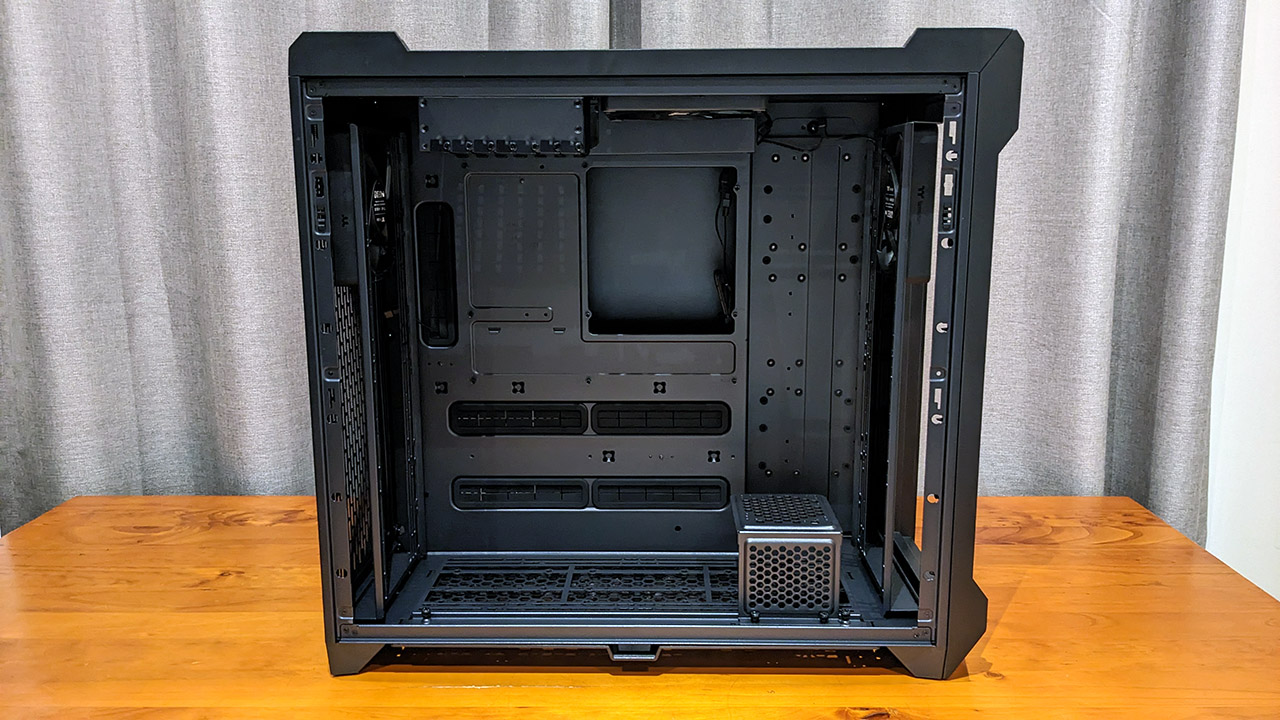
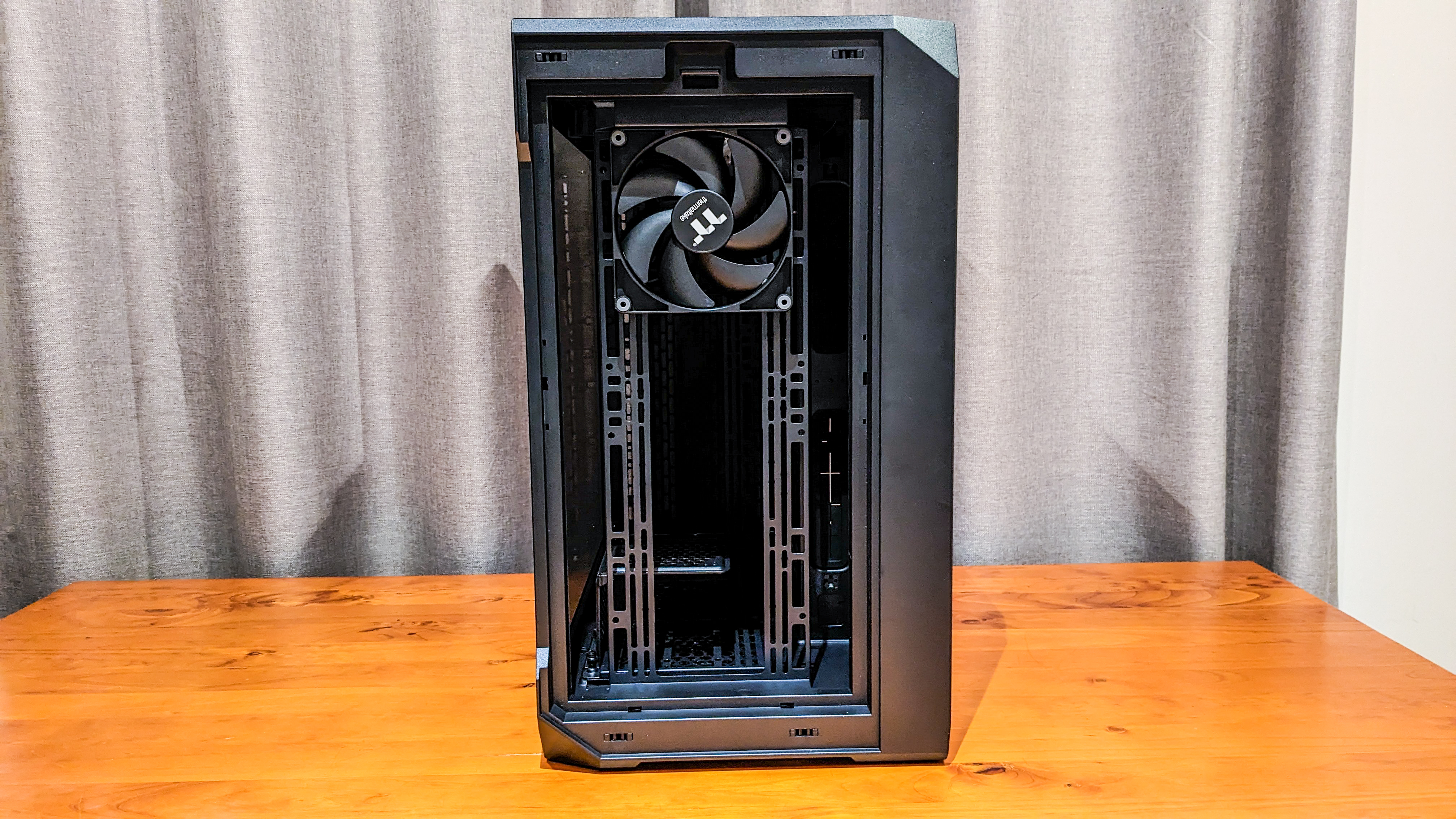
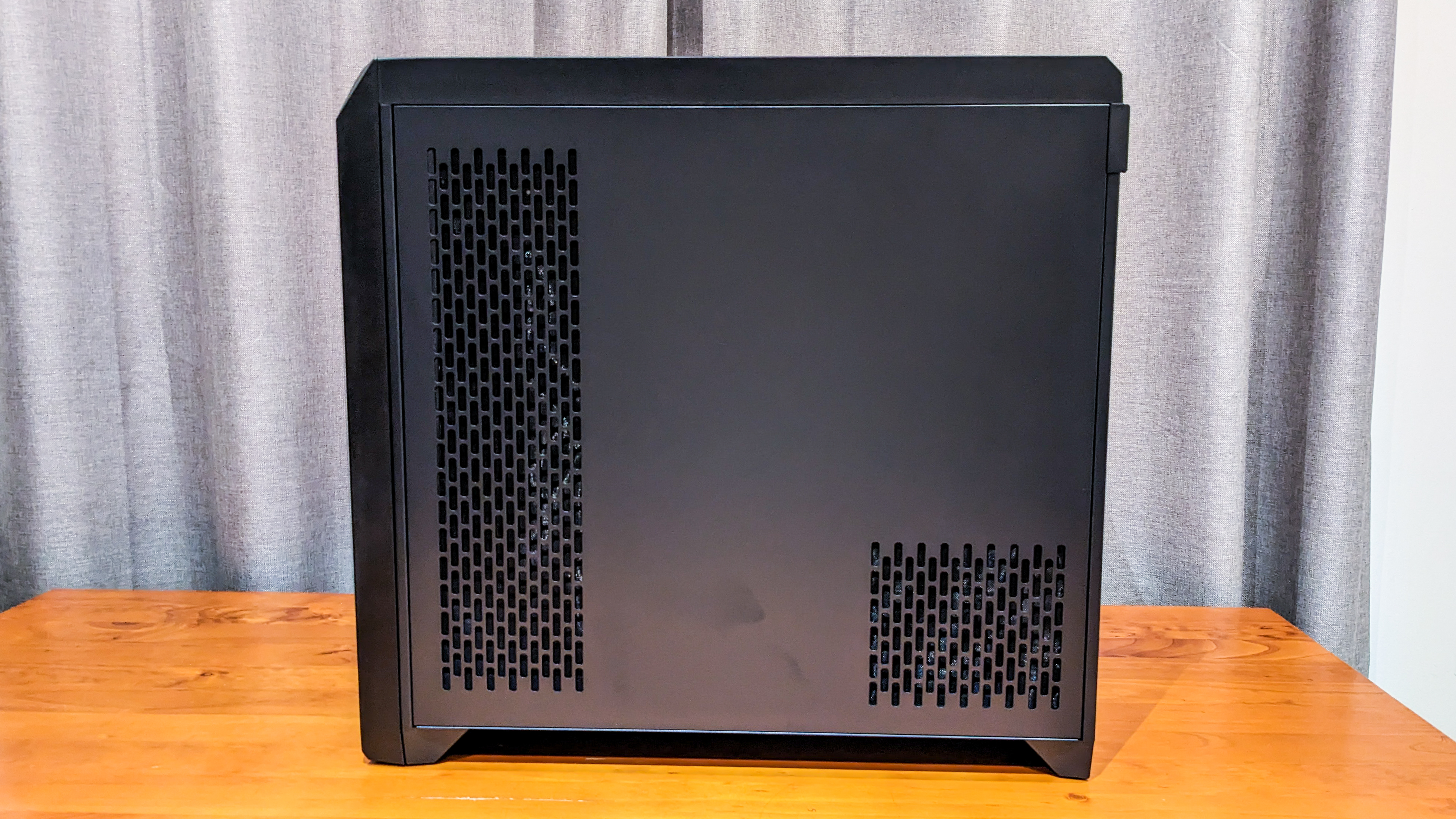
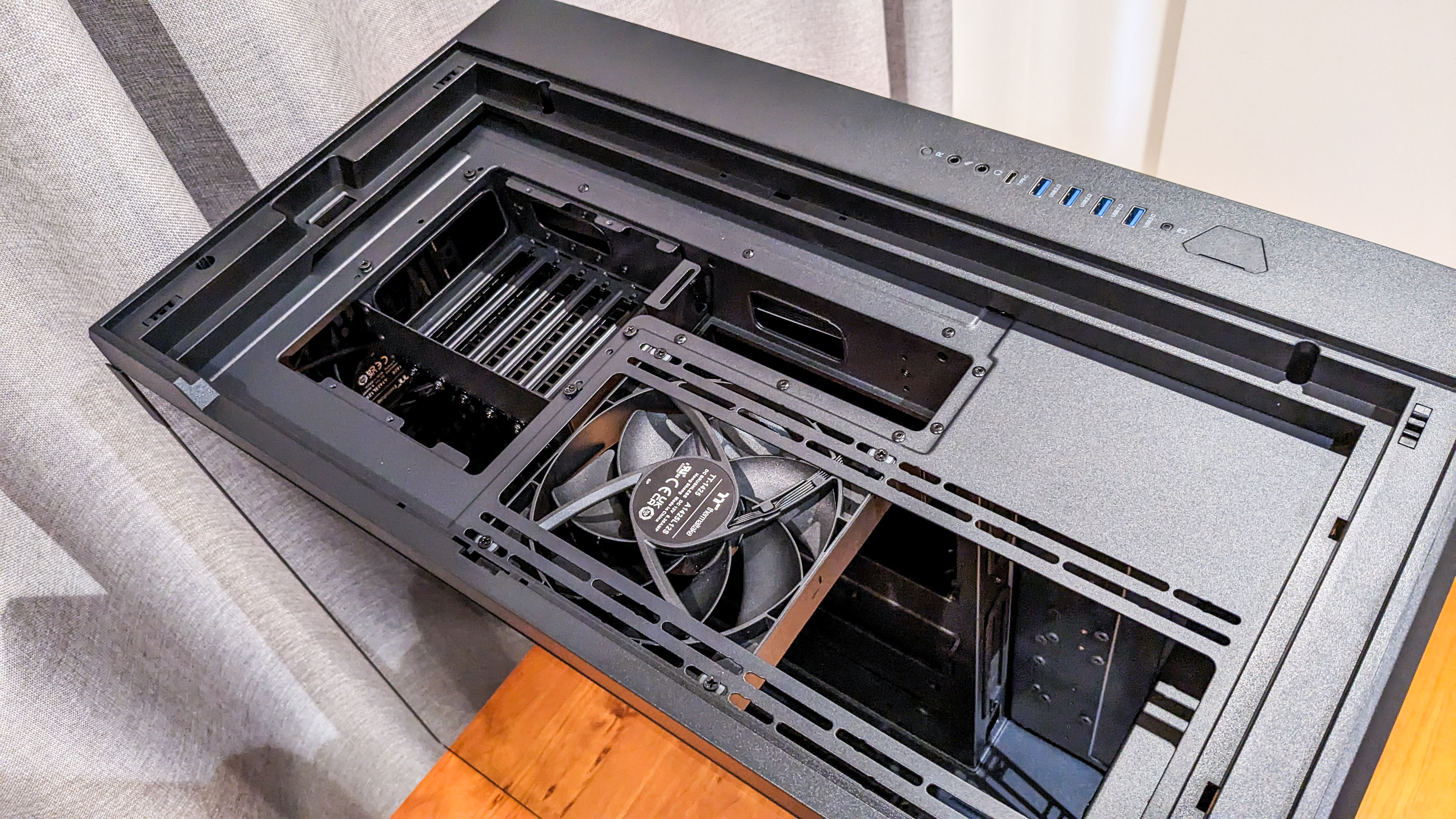
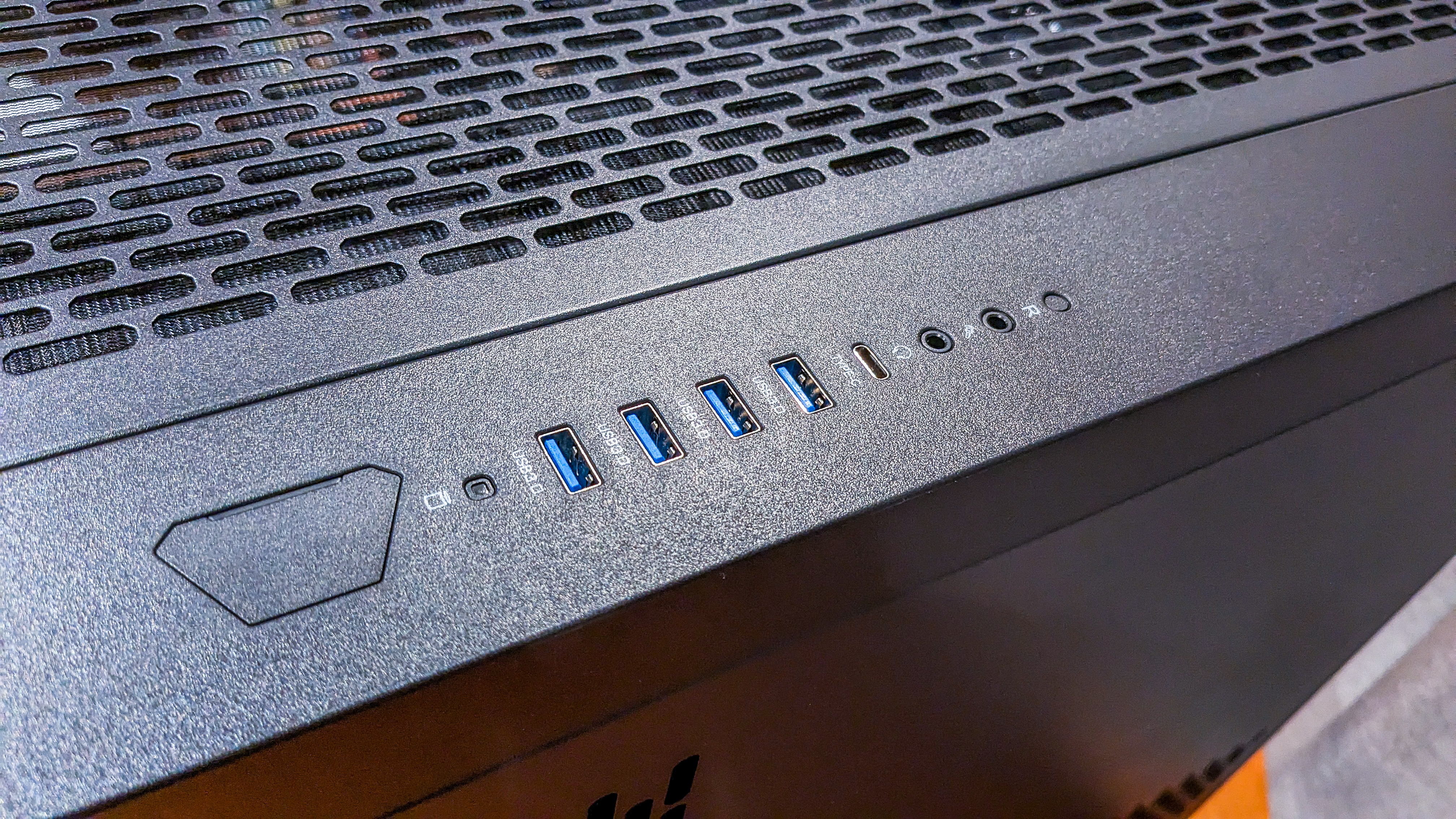
The C750 has extensive perforations to allow air to flow through the case unimpeded from any direction with the exception of the tempered glass side panel. All intakes have dust filtering.
One of my favorite features is the sheer amount of space behind the motherboard tray. This makes cable management a breeze, leaving plenty of space for thick and stiff PSU cables.
However, some thought needs to go into your fan installation as it can be difficult to route fan and RGB cables for a rotated motherboard. At least it is if you're a fussy builder. Your cables might need to go to headers in locations you might not expect.
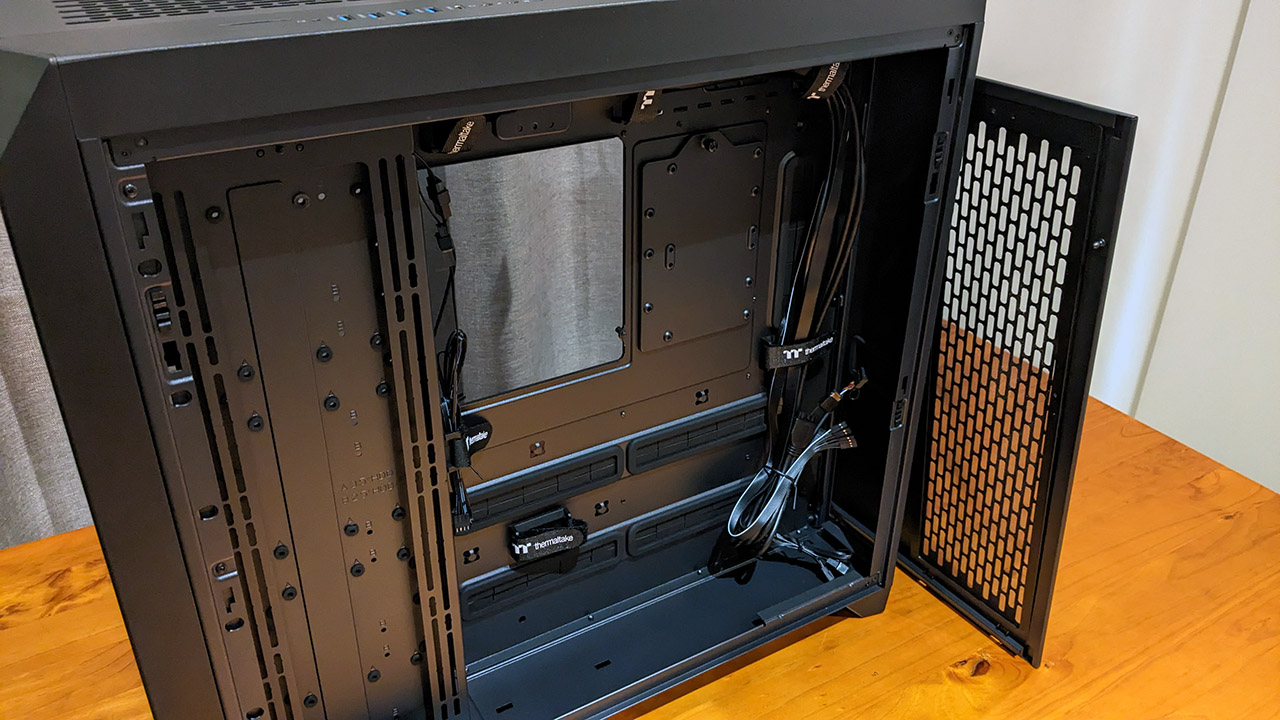
Overall the build process is daily standard. I appreciate the ability to remove the fan frames. That makes it a lot easier to install radiators or fans. Without that feature, it would be difficult to access them without taking out the graphics card. In the default position anyway.
In the end, the result is a clean and clutter free build. But I do have a criticism. the motherboard rear I/O panel is difficult to access. The CTE philosophy means the motherboard I/O is not flush with the top of the case, and in fact its underneath the top panel and air filter.
There's a small slot for routing cables out the back, and that's fine for things like a Wi-Fi leads or USB cables, but my Corsair mouse has a ferrite bead on its cable and there's no way to insert it without leaving the top air filter and panel off. I'd like to see this gap widened to accommodate all possible motherboard I/O cables.
Thermaltake's choice to include just three fans is a wise one in my opinion. It helps to keep the cost down, and as this is a case designed for high end systems and watercooling, the chances are you'll deck it out with your choice of fans anyway, possibly leaving the bundled Thermaltake ones as superfluous extras.
This is a case designed for high end systems and watercooling,
A big case like this does deserve to be shown off, and to that end, I installed some Thermaltake CT140 ARGB fans, with three at the front and three at the rear.
They're very quiet! The airflow through the case is excellent and the MSI RTX 4080 Suprim I used for the test build was happy to hum along at under 60 degrees. In the end, who cares about a degree or two here or there. It looks great.
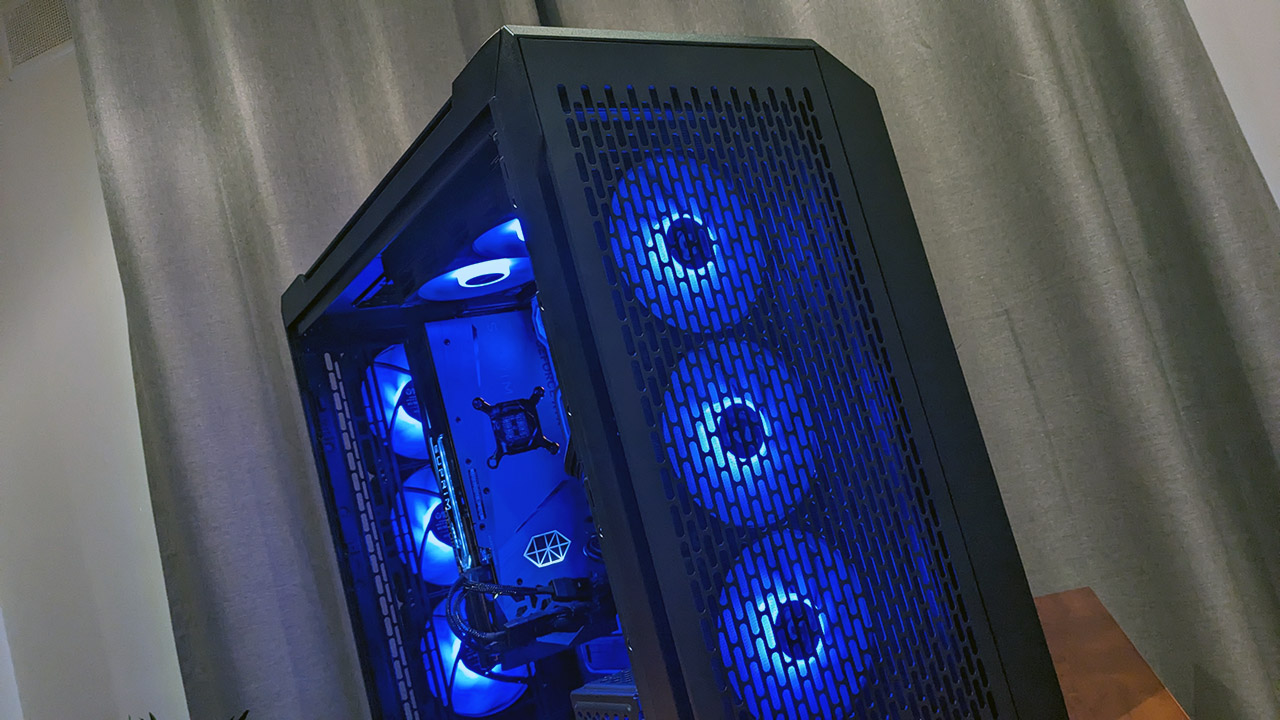

Personally I'm a fan of the big CTE C750 Air case. I like big cases for powerful systems and this one sure is big. Its flexibility is a highlight. That I/O is top notch too with four USB 3.0 ports being a welcome inclusion.
Its price is excellent. At $179 / £169 / AU$269 it's a lot of case for your money. It's only got three fans, but that's not a bad thing in my opinion. If you're going to add radiators, the chances are you'll be selecting your own fans anyway.
But it isn't perfect. Access to the motherboard's rear I/O is impossible without taking off the top panel and air filter. I also don't like the thin gap TT left for routing cables. Some cables simply won't fit.
Access to the motherboard's rear I/O is impossible without taking off the top panel and air filter.
I'd also like to see a small modification or two to assist with routing ARGB and fan cables. They can end up like spaghetti if you don't take care to route them properly.
The C750 is a welcome attempt by Thermaltake to innovate in the PC case market. With just a couple of tweaks, the C750 could go from being good to great. It's a unique case that offers flexibility and good value for money even if it's best suited to the most powerful builds with expansive water cooling systems.
The Thermaltake CTE C750 Air represents a refreshingly different approach to case design. It has some quirks and it's overkill for a worldly build, but if you plan to deck out a powerful system with custom water cooling, it's well worth a look at this price.

Chris' gaming experiences go back to the mid-nineties when he conned his parents into buying an 'educational PC' that was conveniently overpowered to play Doom and Tie Fighter. He developed a love of extreme overclocking that destroyed his savings despite the cheaper hardware on offer via his job at a PC store. To afford more LN2 he began moonlighting as a reviewer for VR-Zone before jumping the fence to work for MSI Australia. Since then, he's gone back to journalism, enthusiastically reviewing the latest and greatest components for PC & Tech Authority, PC Powerplay and currently Australian Personal Computer magazine and PC Gamer. Chris still puts far too many hours into Borderlands 3, always striving to become a more efficient killer.
